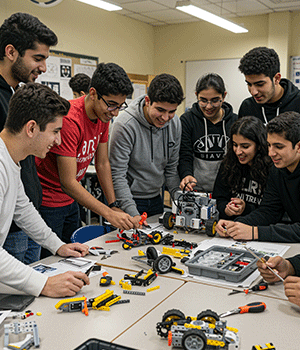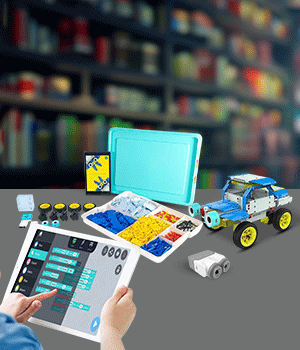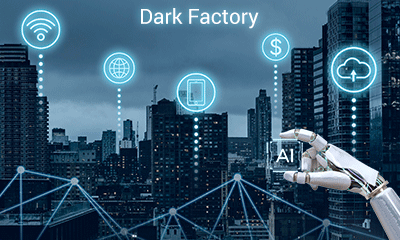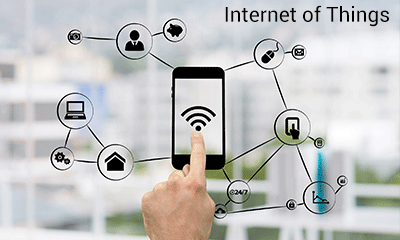

The Power of Robotics and AI
Revolutionizing Industries and Shaping the Future
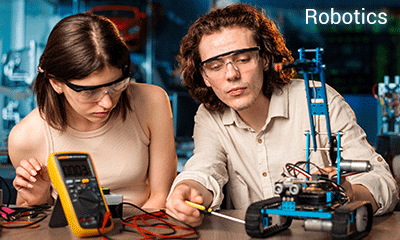
In today’s rapidly evolving world, robotics and artificial intelligence (AI) are transforming industries across the globe. From manufacturing to healthcare, education, and even space exploration, these technologies are enhancing efficiency, safety, and precision in ways previously thought impossible. This blog delves into the synergy between robotics and AI, highlighting their impact on various sectors and their potential to revolutionize the future.
What is Robotics and AI?
Robotics refers to the design, construction, and operation of robots—machines that can perform tasks autonomously or semi-autonomously. Artificial Intelligence (AI), on the other hand, is the simulation of human intelligence processes by machines, particularly computer systems. AI allows robots to learn, adapt, and make decisions based on data, enabling them to perform complex tasks with minimal human intervention.
When combined, robotics and AI create intelligent machines capable of performing tasks with unprecedented autonomy, precision, and adaptability. This powerful duo is driving innovations in industries worldwide.
The Role of Robotics and AI in Modern Industries
Manufacturing and Automation : Robotics and AI have transformed the manufacturing sector, leading to the rise of smart factories. With the integration of AI-powered robots, manufacturing processes have become more efficient, flexible, and scalable. Robots are now capable of assembling products, performing quality control, and even packaging autonomously. This automation improves productivity, reduces costs, and enhances safety by minimizing human error in hazardous environments.
Healthcare and Medical Robotics : In healthcare, the combination of robotics and AI is revolutionizing patient care. Robotic surgery systems, powered by AI, allow for highly precise and minimally invasive surgeries, reducing recovery time and risks. AI-driven robots also assist in rehabilitation therapies, helping patients recover more effectively. Additionally, AI-powered diagnostic tools enable faster and more accurate disease detection, improving overall patient outcomes.
Robotics in Education : Educational robotics is an exciting and growing field that introduces students to the world of technology and engineering. By integrating robotics and AI into the curriculum, schools can engage students in hands-on learning experiences that foster creativity, critical thinking, and problem-solving skills. Educational robots such as LEGO Mindstorms and VEX Robotics allow students to program and control robots, giving them a deep understanding of coding, engineering, and robotics principles.
Autonomous Vehicles and Drones : One of the most talked-about applications of robotics and AI is in autonomous vehicles. Self-driving cars and drones, powered by AI, are already reshaping the transportation industry. These intelligent vehicles can navigate complex environments, avoid obstacles, and make real-time decisions, all without human input. The future of transportation looks set to become safer, more efficient, and environmentally friendly, thanks to robotics and AI.
Retail and Customer Service : AI-powered robots are also making their mark in the retail and customer service industries. From automated checkout systems to robotic assistants in stores, AI-driven robots are enhancing the customer experience. In warehouses, robots can pick and pack items with high precision, while AI algorithms optimize inventory management, ensuring that stores always have the right products in stock.
Key Benefits of Robotics and AI Integration
Increased Efficiency: Robots powered by AI can perform tasks faster and more accurately than humans, improving productivity and reducing downtime in industrial processes.
Cost Reduction: Automation lowers labor costs, while AI helps optimize resources and minimize waste, ultimately reducing operational expenses.
Improved Safety: Robots can take on dangerous tasks in hazardous environments, such as bomb disposal, toxic chemical handling, and search and rescue missions, keeping humans safe.
Enhanced Precision: With AI algorithms, robots can complete tasks with incredible precision, reducing errors and improving quality control in manufacturing and medical procedures.
Scalability: Robotics and AI systems can be easily scaled to meet increasing demand, making them ideal for industries requiring flexibility and high-volume production.
The Future of Robotics: What’s Next?
- Collaborative Robots (Cobots): Unlike traditional robots, cobots are designed to work alongside humans in shared workspaces. They are intuitive, safe, and easy to program, making them ideal for small and medium-sized businesses looking to integrate automation.
-
AI-Powered Decision-Making: In the future, AI will play an
even more significant role in decision-making processes
across industries. Robots will not only execute tasks but
also analyze data, predict outcomes, and provide
actionable insights to optimize performance.
-
Human-Robot Interaction (HRI): As robots become more
advanced, the interaction between humans and machines will
become increasingly seamless. This will lead to greater
collaboration between humans and robots in industries like
healthcare, language translations, manufacturing, and
education.
-
Ethical Considerations: As robots and AI take on more
responsibilities, ethical concerns, such as job
displacement and AI governance, will need to be addressed.
Striking a balance between automation and human
involvement will be crucial for ensuring a sustainable
future.
Conclusion
The fusion of robotics and AI is driving unparalleled innovations across multiple sectors. As technology continues to advance, we can expect even more revolutionary changes in how we live, work, and interact with machines. From manufacturing to healthcare, education, and transportation, robotics and AI are creating smarter, safer, and more efficient systems that will shape the future for years to come.
Embracing these technologies today is the key to staying ahead in tomorrow’s competitive world. Whether you’re an entrepreneur, educator, or tech enthusiast, understanding the potential of robotics and AI is essential for navigating the future of innovation.
